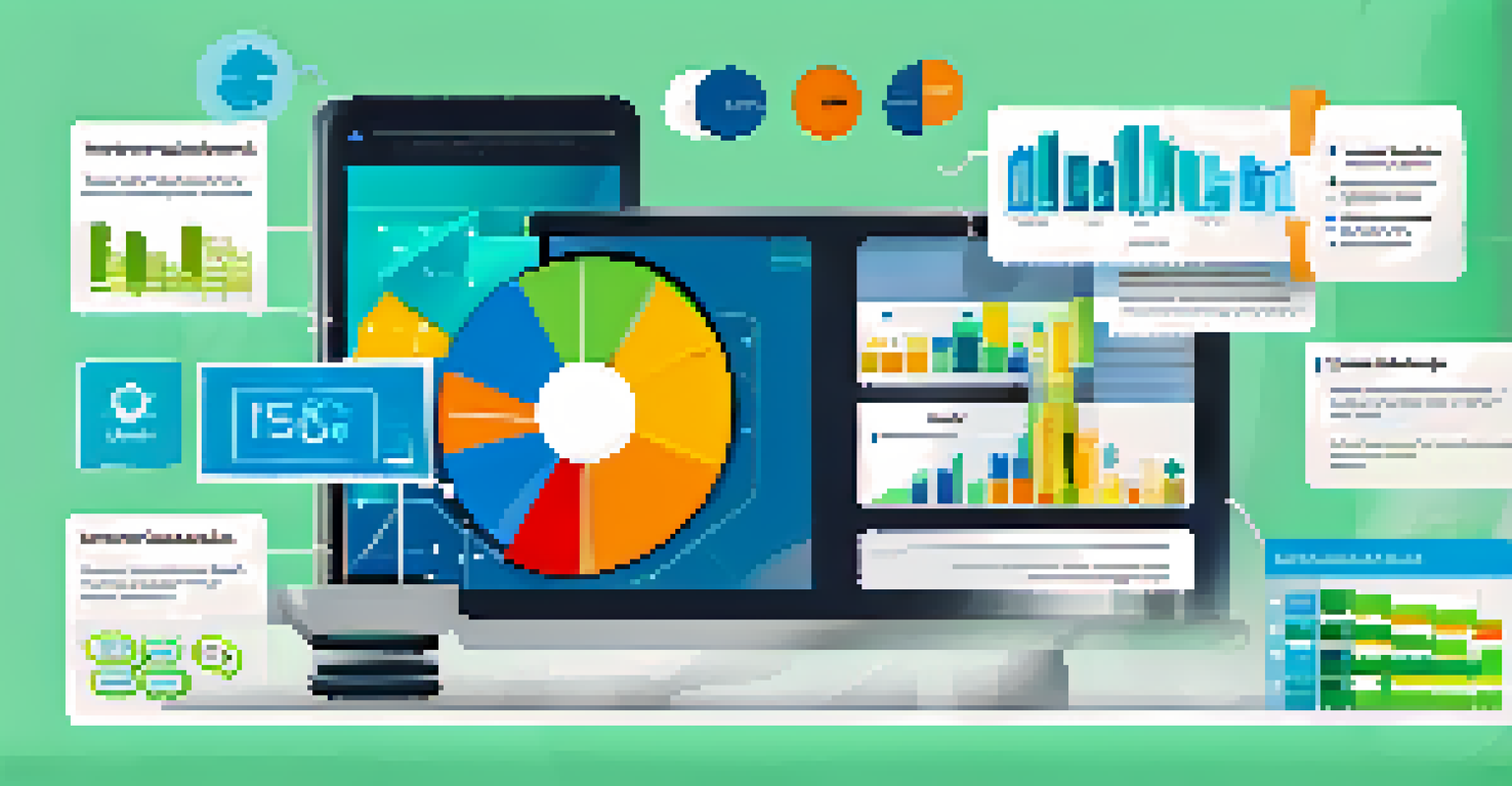Understanding Learning Analytics: A Comprehensive Overview

What Are Learning Analytics and Why Do They Matter?
Learning analytics refers to the measurement, collection, analysis, and reporting of data about learners and their contexts. This information aims to understand and optimize learning experiences. Essentially, it helps educators make informed decisions to enhance student outcomes.
Data is the new oil. It’s valuable, but if unrefined it cannot really be used.
Imagine being a chef who can see how diners react to each dish you serve. You can tweak your recipes in real-time based on their feedback. Similarly, learning analytics provides educators with insights that allow them to adjust their teaching methods and materials to better suit student needs.
As education evolves, the importance of learning analytics only grows. It helps institutions identify trends, improve course designs, and ultimately foster a more effective learning environment.
Key Components of Learning Analytics
The primary components of learning analytics include data collection, analysis, and visualization. Data can come from various sources like assessments, attendance, and even social interactions in online platforms. By aggregating this data, educators can gain a comprehensive view of student performance.

Think of data collection as gathering ingredients for a recipe. Each piece of data adds flavor to the final dish. Once collected, analysis acts like cooking; it's where the magic happens, transforming raw data into actionable insights.
Learning Analytics Enhance Education
Learning analytics helps educators optimize teaching methods and improve student outcomes by providing valuable insights into learner performance.
Finally, visualization is crucial because it presents the cooked dish to the diners—in this case, the educators. By using graphs and dashboards, they can easily interpret data and make data-driven decisions about their teaching strategies.
Benefits of Implementing Learning Analytics
One of the most significant benefits of learning analytics is personalized learning. By understanding individual student needs, educators can tailor their approaches, ensuring that every learner receives the support they require to succeed. This personalization can lead to improved engagement and retention.
You can’t manage what you can’t measure.
Consider a gardener who adjusts watering and sunlight based on each plant’s specific needs. Learning analytics enables educators to nurture their students in similar ways, fostering growth and development uniquely suited to each individual.
In addition to personalizing learning, analytics can help identify at-risk students early on. By monitoring performance trends, educators can intervene proactively, providing necessary resources before issues escalate.
Challenges in Learning Analytics
While learning analytics offers numerous advantages, it also faces challenges. One major concern is data privacy; students' information must be protected to maintain trust. Institutions must ensure they comply with regulations and ethical standards when collecting and using data.
Imagine a library filled with personal diaries—the insights are valuable, but the privacy of the authors must be respected. Similarly, educational institutions must handle student data with care to avoid potential misuse.
Personalized Learning for Students
By analyzing individual student data, learning analytics enables tailored educational approaches that boost engagement and retention.
Another challenge is the integration of data from various platforms. Educators often use multiple tools, making it difficult to compile and analyze all relevant data effectively. This can hinder the comprehensive understanding that learning analytics aims to provide.
Tools and Technologies for Learning Analytics
Various tools are available for learning analytics, each designed to facilitate different aspects of data collection and analysis. Popular platforms include Learning Management Systems (LMS) like Moodle and Canvas, which often come with built-in analytics features to track student progress.
Think of these tools as different types of kitchen appliances, each serving a unique function. Some are excellent for chopping, while others excel at baking. Similarly, the right analytics tool can simplify data management and enhance insights.
In addition to LMS, dedicated analytics platforms like Tableau and Google Data Studio offer advanced visualization capabilities. These tools empower educators to present data in engaging ways, making it easier to spot trends and make informed decisions.
The Role of Educators in Learning Analytics
Educators play a crucial role in the effective implementation of learning analytics. They need to understand how to interpret data and incorporate insights into their teaching practices. This requires ongoing professional development and collaboration with data experts.
Consider educators as the captains of a ship, navigating through the sea of data. They need to be equipped with the right tools and knowledge to steer their students toward success. Without proper training, they may struggle to utilize analytics effectively.
Data Privacy and Integration Challenges
While beneficial, learning analytics faces challenges such as ensuring data privacy and integrating diverse data sources effectively.
Moreover, educators must foster a data-informed culture within their institutions. By promoting the value of learning analytics among their peers, they can create a collaborative environment that benefits everyone involved in the educational process.
Future Trends in Learning Analytics
As technology continues to advance, the future of learning analytics looks promising. One emerging trend is the integration of artificial intelligence (AI) to enhance data analysis. AI can help identify patterns and predict student outcomes more accurately, allowing for even more personalized learning experiences.
Imagine having a weather app that not only forecasts conditions but also suggests what to wear. Similarly, AI can offer educators tailored recommendations based on student data, making it easier to adapt teaching methods accordingly.

Another trend is the increasing emphasis on learner agency. As students become more aware of their learning processes, they will seek ways to engage with their own data. This shift will encourage educators to involve students in discussions about analytics, fostering a sense of ownership over their educational journeys.